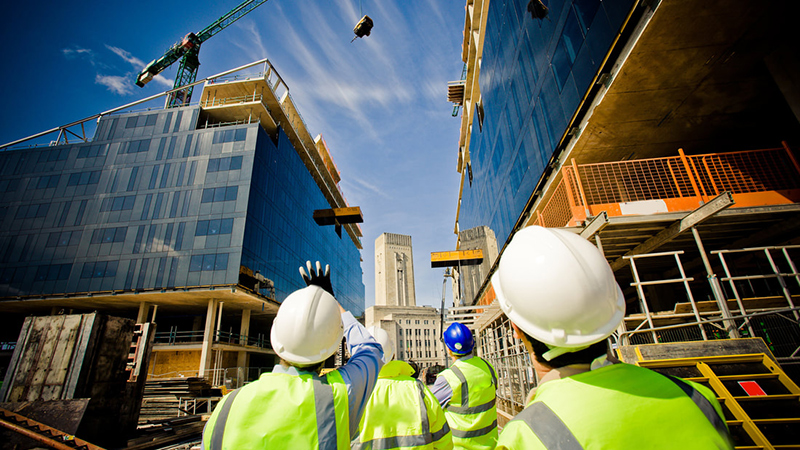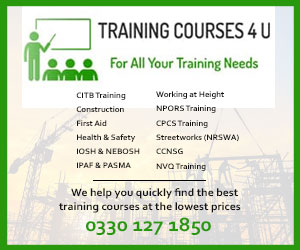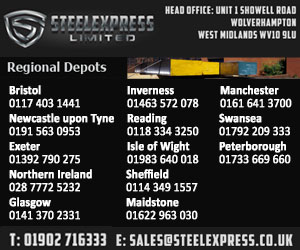Address
Champion Business Park, The Administration Building
Arrowebrook Road
Arrowebrook Road
Birkenhead
CH49 0AB
Opening Hours
Today
06:00-18:00
View All Hours
Sunday
Closed
Monday
06:00-18:00
Tuesday
06:00-18:00
Wednesday
06:00-18:00
Thursday
06:00-18:00
Friday
06:00-18:00
Saturday
09:00-24:00
Other Dates
For contact out of these hours and if you need emergency support, we can be contacted on our out of hours mobile:
07572877551
About Better Safety
Our Vision
To supply professional health and safety information, advice and guidance to business throughout England and Wales.
Our Mission
Provide health and safety expert advice and guidance as a trusted business partner to our clients throughout England and Wales.
Our Values
Time | Cost | Quality
We believe in delivering a service on time to support your needs. We believe in delivering a service to meet your budget requirements. We believe that our service should be the same as if you employed a health and safety professional to your company.
Our Service Offer
We support organisations who require a range of occupational health and safety needs. This can be one off accident and incident investigations, to ongoing retained advisor to your business. Even if we cannot help, we will always comb our networks and see if we can find you a suitable organisation to support your needs.
CDM Services
We have four aspects of our service for CDM Services. These are:
Whether you are experiencing a period of significant growth, planing the sale of the business, looking to reduce your insurance premiums, or simply need an experienced C-level advisor who understands the complexities of running a business from a range of broader perspectives than just health and safety alone: we can help.
Some of the strategic services we offer include:
We are able to provide a range of bespoke training packages for senior leaders to better understand their roles and responsibilities in relation to health and safety. This includes:
Competent Person
Small business or just need an additional resource for a specific project? Not only a legal requirement for organisations, but a sensible precaution too. If your business is not yet grown to the point where you need a full time health and safety service, we can fill the gap for you and keep you compliant.
If you have recognised there is additional scope for further competence such as undertaking a construction project in a school, this is exactly where an additional layer of protection can mean the difference between compliance and prosecution, or worse, an accident.
Coaching and Mentoring
We provide this service as a direct result of the work we have completed with C-Managers across the UK and Europe.
Our coaching philosophy is based firmly in Cognitive Behavioural Therapy and Neuro-Linguistic Programming. This service is not fixed to health and safety. Rather, this service is aimed at the overall effectiveness of the decision makers in a business who sometimes need a trusted and impartial sounding board.
To supply professional health and safety information, advice and guidance to business throughout England and Wales.
Our Mission
Provide health and safety expert advice and guidance as a trusted business partner to our clients throughout England and Wales.
Our Values
Time | Cost | Quality
We believe in delivering a service on time to support your needs. We believe in delivering a service to meet your budget requirements. We believe that our service should be the same as if you employed a health and safety professional to your company.
Our Service Offer
We support organisations who require a range of occupational health and safety needs. This can be one off accident and incident investigations, to ongoing retained advisor to your business. Even if we cannot help, we will always comb our networks and see if we can find you a suitable organisation to support your needs.
CDM Services
We have four aspects of our service for CDM Services. These are:
- CDM: Client Advisor
The role of Client has changed since the introduction of CDM 2015. Many of the duties previously completed by the CDM Co-ordinator now fall under Client duties. - CDM Principal Design Advisor
CDM 2015 introduced the role of Principal Designer, which partly replaces the previous CDM Co-ordinator duties. The Principal Designer is responsible for the planning, monitoring and co-ordination aspects of designing health and safety into a construction project. This includes considerations of the principles of prevention for: Design | Construction | Handover | In use | Demolition. - CDM Site Health Safety Advisor
CDM 2015 has no specific duty for a health and safety advisor. However, this role is often critical in identifying potential hazardous operations and working on site, supporting site workforce with concerns, being proactive in ensuring compliance and helping site management teams to drive safety standards upwards throughout the build. - CDM Contractor Support
Whether it is a review of Risk Assessments and Method Statements, or you need general site safety advice, guidance and support. We can help small builders right through to 1st tier Contractors on major projects. Our experience covers all scopes of work within the construction industry. We can help your construction business to remain compliant and develop your safety management systems to the next level.
Whether you are experiencing a period of significant growth, planing the sale of the business, looking to reduce your insurance premiums, or simply need an experienced C-level advisor who understands the complexities of running a business from a range of broader perspectives than just health and safety alone: we can help.
Some of the strategic services we offer include:
- Critical Incident Planning
- Governance and Risk
- Safety Management Systems
- Post-Incident Root Cause Analysis
- Tendering and Procurement Gateway Creation
- Sickness and Absence Reduction Strategies
We are able to provide a range of bespoke training packages for senior leaders to better understand their roles and responsibilities in relation to health and safety. This includes:
- Construction: CDM Duties of the Client | Duties of the Principal Designer | Duties of the Principal Contractor
- CITB: Site Safety Plus | SMSTS | SSSTS
- Safety Leadership: Safety for Directors | Safety for Senior Managers | Safety for Managers
- Behavioural Safety: Implementing BBS | Learning from BBS | Next steps from BBS
- Safety Management Systems: Design | Deliver | Audit | Improve
Competent Person
Small business or just need an additional resource for a specific project? Not only a legal requirement for organisations, but a sensible precaution too. If your business is not yet grown to the point where you need a full time health and safety service, we can fill the gap for you and keep you compliant.
If you have recognised there is additional scope for further competence such as undertaking a construction project in a school, this is exactly where an additional layer of protection can mean the difference between compliance and prosecution, or worse, an accident.
Coaching and Mentoring
We provide this service as a direct result of the work we have completed with C-Managers across the UK and Europe.
Our coaching philosophy is based firmly in Cognitive Behavioural Therapy and Neuro-Linguistic Programming. This service is not fixed to health and safety. Rather, this service is aimed at the overall effectiveness of the decision makers in a business who sometimes need a trusted and impartial sounding board.
For more information, please Contact Us!
Gallery
Videos
News
Writing a risk assessment is not what most small businesses think about when they start up, however, doing them right is a key part of a successful health and safety management system.
If you employ five or more people, you have to write risk assessments and share them with your employees. If you employ less than five people, you still need to carry out risk assessments to achieve health and safety compliance, but you may not need to write them down.
This article is aimed at non-safety people and (hopefully) written in clear English for business owners.
No matter what industry or sector you are involved in, from office safety to managing health and safety in construction, a risk assessment usually follows the same five key themes: Identify the hazards; Record who can be harmed and how; Identify controls; Record your findings and share them with affected people; Review your findings.
1. Identify the hazard
So, what is a hazard? Something which has the potential to cause harm.
A hazard could be a wire trailing across the floor because a person could trip over it and hurt themselves.
Another hazard may be using a laptop for long periods of time. It may not seem obvious, but using a laptop for many hours can cause serious pain in the hands and wrists. Not to mention eye strain and poor back posture.
So, if we were to write a health and safety risk assessment, it would look like this:
2. Identify who can be harmed and how
Taking our same examples as above, think about who can be harmed by your office trailing cables. Who will visit your office? Staff, customers, contractors can all be affected by this.
How could these people be harmed from a trailing cable? We would normally suggest tripping over the cable could lead to bruised body parts and potential broken bones
Who can be harmed from using a laptop? Usually we would record the people using the laptops can be harmed from poor posture, eye strain, sore hands or wrists (we call this upper limb disorders now).
So, the next part would look like this:
3. Identify appropriate control measures
If possible, it is always best to eliminate the hazards when practical to do so. This can be simple if you have a trailing cable, but not so simple of you have just invested £5,000 in laptops for your mobile workforce!
You need to consider not just elimination of a hazard (the best option) but also reducing the hazard to as low as reasonably practical. In the case of laptops, you may need to consider buying work stations, gel mouse mats, comfortable chairs to work with upright posture, positioning laptops so there is no screen glare, eye tests for users, training how to safely use laptops.
Part 3 would look something like this:
4. Record your findings and share them with affected people
It is always a good idea to ask for feedback from people who are doing the tasks that need a health and safety risk assessment. You do not need health and safety consultants or specialist health and safety training to tell you that something could be dangerous in the first instance. Try talking to your employees first!
Write down who you have shared the health and safety risk assessment with, which shows you have involved the people in the risk assessment process, like so:
5. Review your risk assessment
If there are no major changes in your workplace (same office, same number of people, same jobs?) then it could be that you just need to check your risk assessment every year.
If there are some changes, you may need to review this. Examples of changes could be:
• Expanded office to include double the users
• An employee has become pregnant and may not be able to use the same chair anymore
• An employee has reported sharp pains in their hands / wrists
• You want to purchase more equipment
If any of the above changes did happen you would probably review this example risk assessment as soon as you become aware of the situation(s) described.
If not you would simply record as follows:
Finally, just sign and date the risk assessment to say who and when it was completed:
This is a simple exercise designed to teach the basics principles of writing a risk assessment. If you want to understand more about health and safety risk assessments or require some health and safety training for yourself or your team, you can contact us on 0330 0948 848 (Option 1) or leave us an email. We’re always happy to share health and safety advice with all industries across the United Kingdom.
If you employ five or more people, you have to write risk assessments and share them with your employees. If you employ less than five people, you still need to carry out risk assessments to achieve health and safety compliance, but you may not need to write them down.
This article is aimed at non-safety people and (hopefully) written in clear English for business owners.
No matter what industry or sector you are involved in, from office safety to managing health and safety in construction, a risk assessment usually follows the same five key themes: Identify the hazards; Record who can be harmed and how; Identify controls; Record your findings and share them with affected people; Review your findings.
1. Identify the hazard
So, what is a hazard? Something which has the potential to cause harm.
A hazard could be a wire trailing across the floor because a person could trip over it and hurt themselves.
Another hazard may be using a laptop for long periods of time. It may not seem obvious, but using a laptop for many hours can cause serious pain in the hands and wrists. Not to mention eye strain and poor back posture.
So, if we were to write a health and safety risk assessment, it would look like this:
2. Identify who can be harmed and how
Taking our same examples as above, think about who can be harmed by your office trailing cables. Who will visit your office? Staff, customers, contractors can all be affected by this.
How could these people be harmed from a trailing cable? We would normally suggest tripping over the cable could lead to bruised body parts and potential broken bones
Who can be harmed from using a laptop? Usually we would record the people using the laptops can be harmed from poor posture, eye strain, sore hands or wrists (we call this upper limb disorders now).
So, the next part would look like this:
3. Identify appropriate control measures
If possible, it is always best to eliminate the hazards when practical to do so. This can be simple if you have a trailing cable, but not so simple of you have just invested £5,000 in laptops for your mobile workforce!
You need to consider not just elimination of a hazard (the best option) but also reducing the hazard to as low as reasonably practical. In the case of laptops, you may need to consider buying work stations, gel mouse mats, comfortable chairs to work with upright posture, positioning laptops so there is no screen glare, eye tests for users, training how to safely use laptops.
Part 3 would look something like this:
4. Record your findings and share them with affected people
It is always a good idea to ask for feedback from people who are doing the tasks that need a health and safety risk assessment. You do not need health and safety consultants or specialist health and safety training to tell you that something could be dangerous in the first instance. Try talking to your employees first!
Write down who you have shared the health and safety risk assessment with, which shows you have involved the people in the risk assessment process, like so:
5. Review your risk assessment
If there are no major changes in your workplace (same office, same number of people, same jobs?) then it could be that you just need to check your risk assessment every year.
If there are some changes, you may need to review this. Examples of changes could be:
• Expanded office to include double the users
• An employee has become pregnant and may not be able to use the same chair anymore
• An employee has reported sharp pains in their hands / wrists
• You want to purchase more equipment
If any of the above changes did happen you would probably review this example risk assessment as soon as you become aware of the situation(s) described.
If not you would simply record as follows:
Finally, just sign and date the risk assessment to say who and when it was completed:
This is a simple exercise designed to teach the basics principles of writing a risk assessment. If you want to understand more about health and safety risk assessments or require some health and safety training for yourself or your team, you can contact us on 0330 0948 848 (Option 1) or leave us an email. We’re always happy to share health and safety advice with all industries across the United Kingdom.
Many of us have seen the financial auditors up to their all-too common tricks again, with the collapse of Carillion being one of the most eyebrow raising in a long while. Rachel Reeves MP suggested financial auditors KPMG were “guilty of failing to tackle the crisis” and failed to “paint a true picture of its crippling financial problems.”
The BEIS went on to say that KPMG failed to “exercise professional scepticism towards Carillion’s accounting judgements over the course of its tenure as Carillion’s auditor, KPMG was complicit in them.”
There is a link to the report here.
What is “professional scepticism?”
From our experience as an auditor we suggest that our role is to objectively seek out evidence of compliance, or non-compliance within an agreed common standard. It does not matter if you are being externally audited against a management system such as ISO 45001, or if you prefer HSG 65.
An auditor is an integral part of your management decision making processes. A strong auditor who challenges the senior staff, asks difficult questions, takes unaccompanied or unplanned changes to the plan of the day, may be just the type of auditor you are looking for! More importantly, they may be just the type of auditor your business needs!
We recently spent some time working in one of the most dangerous places I have ever encountered in my professional career. I witnessed people working under poorly secured crane loads, working at height with no protection, smudging of a RIDDOR incident involving a crane, LPG gas unsecured and immediately adjacent to several dozen acetylene and oxygen cylinders. Were people smoking near to the containers? Of course!
Sadly, there were senior safety professionals in place, safety advisors on site and perhaps worst of all…they hold full safety management accreditation with a highly prestigious external auditor.
It took less than two days for us to highlight some of the main issues faced in the organisation above. We did nothing special or use any magical powers. I took a safety walk around, spoke to staff on site informally and took a couple of pictures. When later informing the senior leadership of the findings, some of the quick-wins were taken care of. However, there was no evidence of anything further than this.
Badges for cash
Imagine walking into a bank and telling the cashier you wanted to deposit £20k into your bank account. Then you show them a picture of £20k and they simply put the money in. That would be great, wouldn’t it?
Now let us apply this same analogy to many of the accreditations schemes that you can find on SSIP here.
It may also be worth noting that the above is fully supported by the HSE too! If it is good for the regulator, it must be good for your business, right?
The truth is that many of the SSIP providers are desktop auditors. This means you can pay a consultant to write you a lovely safety management system full of documents….and you would never need to apply or implement them once…but you would still be granted at least one of the SSIP accreditations. Great news if you are just trying to pay for badges to get some work. Not so great should you get found out via regulatory visit.
We do it right
Our experience has taught us that many organisations that decide to manage health and safety responsibilities in a professional manner, either:
Have had a serious incident and are on the hook with the regulator / police
Have had a squeaky bottom moment where they could have ended up on the hook
Come from an environment or background where safety really does matter
These are the absolute best organisations to work with. They usually have a feeling that something is not quite right and they just need a helping hand to get them on their way.
Recommendations
There are only two organisations we would recommend to clients who want to do it right.
Firstly, I would highly recommend British Safety Council Five Star Audit. These guys will absolutely put your organisation through its paces. There is a link to them here.
Before you ask, no I do not work for British Safety Council and we are not affiliated to them in any way. The recommendation is based on our experience of how rigorous their audit is and how professional the report is at the end. This is not for the faint of heart!
Secondly, it would seem only fair to mention, Better Safety (Full disclosure, we are definitely affiliated to this one!).
We do something slightly different to the above though. Not only do we audit your business with “sceptical professionalism,” but we also provide you with ongoing support to proactively manage health safety in your business. This achieved by appointing us as your Competent Person or for larger organisations, Strategic Services.
We do not ‘do’ health and safety for you – this is impossible. Lots of consultants will say this, but it is not very often going to be their head on the cho
The BEIS went on to say that KPMG failed to “exercise professional scepticism towards Carillion’s accounting judgements over the course of its tenure as Carillion’s auditor, KPMG was complicit in them.”
There is a link to the report here.
What is “professional scepticism?”
From our experience as an auditor we suggest that our role is to objectively seek out evidence of compliance, or non-compliance within an agreed common standard. It does not matter if you are being externally audited against a management system such as ISO 45001, or if you prefer HSG 65.
An auditor is an integral part of your management decision making processes. A strong auditor who challenges the senior staff, asks difficult questions, takes unaccompanied or unplanned changes to the plan of the day, may be just the type of auditor you are looking for! More importantly, they may be just the type of auditor your business needs!
We recently spent some time working in one of the most dangerous places I have ever encountered in my professional career. I witnessed people working under poorly secured crane loads, working at height with no protection, smudging of a RIDDOR incident involving a crane, LPG gas unsecured and immediately adjacent to several dozen acetylene and oxygen cylinders. Were people smoking near to the containers? Of course!
Sadly, there were senior safety professionals in place, safety advisors on site and perhaps worst of all…they hold full safety management accreditation with a highly prestigious external auditor.
It took less than two days for us to highlight some of the main issues faced in the organisation above. We did nothing special or use any magical powers. I took a safety walk around, spoke to staff on site informally and took a couple of pictures. When later informing the senior leadership of the findings, some of the quick-wins were taken care of. However, there was no evidence of anything further than this.
Badges for cash
Imagine walking into a bank and telling the cashier you wanted to deposit £20k into your bank account. Then you show them a picture of £20k and they simply put the money in. That would be great, wouldn’t it?
Now let us apply this same analogy to many of the accreditations schemes that you can find on SSIP here.
It may also be worth noting that the above is fully supported by the HSE too! If it is good for the regulator, it must be good for your business, right?
The truth is that many of the SSIP providers are desktop auditors. This means you can pay a consultant to write you a lovely safety management system full of documents….and you would never need to apply or implement them once…but you would still be granted at least one of the SSIP accreditations. Great news if you are just trying to pay for badges to get some work. Not so great should you get found out via regulatory visit.
We do it right
Our experience has taught us that many organisations that decide to manage health and safety responsibilities in a professional manner, either:
Have had a serious incident and are on the hook with the regulator / police
Have had a squeaky bottom moment where they could have ended up on the hook
Come from an environment or background where safety really does matter
These are the absolute best organisations to work with. They usually have a feeling that something is not quite right and they just need a helping hand to get them on their way.
Recommendations
There are only two organisations we would recommend to clients who want to do it right.
Firstly, I would highly recommend British Safety Council Five Star Audit. These guys will absolutely put your organisation through its paces. There is a link to them here.
Before you ask, no I do not work for British Safety Council and we are not affiliated to them in any way. The recommendation is based on our experience of how rigorous their audit is and how professional the report is at the end. This is not for the faint of heart!
Secondly, it would seem only fair to mention, Better Safety (Full disclosure, we are definitely affiliated to this one!).
We do something slightly different to the above though. Not only do we audit your business with “sceptical professionalism,” but we also provide you with ongoing support to proactively manage health safety in your business. This achieved by appointing us as your Competent Person or for larger organisations, Strategic Services.
We do not ‘do’ health and safety for you – this is impossible. Lots of consultants will say this, but it is not very often going to be their head on the cho
What is a Construction Phase Plan?
A Construction Phase Plan is a legal document that outlines how you will manage the safety and health of people during the construction phase of a project.
Many people believe that only large design and build projects are required to have a Construction Phase Plan, but this is not true at all.
The complexity of a construction project will determine the level of detail you need to have in this essential and legally required document.
If a sole trader plasterer was to plaster a wall in a domestic property, they would still need a formal Construction Phase Plan. However, this could be a single page of paper without too much technical information.
When should you create your Construction Phase Plan?
The Construction Phase Plan is created before any construction work is carried out. If the project has multiple contractors and is considered large enough, there may be a principal designer who provides another document called “Pre-Construction Information” to the contractor carrying out the construction project.
By setting out the health and safety arrangements and requirements for the project, every worker involved in the development can work together to reach high safety standards and project safety goals.
So, I just need to create it once, right?
The Construction Phase Plan MUST be prepared before any construction work begins on site. However, as important as the Construction Phase Plan is, it’s not a one-off document that can be left aside throughout your development until the project is finished. The Construction Phase Plan needs to be constantly revisited as work progresses and develops, making note of any changes in plans or arrangements.
For larger projects, items to consider such as fire management, traffic and pedestrian segregation or even first aid arrangements may need to change.
For smaller projects this may not always be the case, but the fact you have a Construction Phase Plan in place in the first instance is a good start.
I am the client. Do I have to be involved in the Construction Phase Plan?
As the client, it is typical that you have significant influence on a project. Afterall, you control the finances, project timescales and appointments. You may also have knowledge of any planning restrictions, local services, that you should make available to the contractor.
Prior to the construction phase of the project starting, you must make sure the contractor you have appointed has created the Construction Phase Plan, and that it is sufficient to meet the needs of the project. You may want to bring in an experienced professional to support you with this.
I am the architect / designer. Do I have to be involved in the Construction Phase Plan?
As a designer on the project, you may have critical information that the contractor needs to create an effective Construction Phase Plan. This may include locations of utilities, detailed ground surveys, engineer reports. All of these documents are likely to contain critical information that can influence the management of health and safety on site.
In some circumstances, you may be appointed as the Principal Designer.
This is a specific duty under CDM regulations that require you to provide Pre-Construction Information to the contractor before any construction works commence. You may want to consult with an experienced professional on the duties of a Principal Designer.
I am the contractor. Where can I find an example Construction Phase Plan?
If you are completing only small works such as plastering, plumbing, brickwork for domestic clients (a house that the client lives in as their main residence) then there is a CDM Wizard tool you can download for free here:
Apple devices here
Android devices here
Laptop / Computer here
For more technical projects that require multiple trades and a principal contractor (the single contractor who is responsible for managing health and safety on the project) then you can find specific information here and go to page 77.
If you are unsure you may want to speak with an experienced professional on how to manage site safety as a contractor.
If you would like to know more about managing construction health and safety then please feel free to drop us a line for an informal chat. We are always happy to discuss projects with property developers, facilities managers, architects and contractors.
For more information on the Construction Phase Plan, call 0330 0948 848 (Option 1).
A Construction Phase Plan is a legal document that outlines how you will manage the safety and health of people during the construction phase of a project.
Many people believe that only large design and build projects are required to have a Construction Phase Plan, but this is not true at all.
The complexity of a construction project will determine the level of detail you need to have in this essential and legally required document.
If a sole trader plasterer was to plaster a wall in a domestic property, they would still need a formal Construction Phase Plan. However, this could be a single page of paper without too much technical information.
When should you create your Construction Phase Plan?
The Construction Phase Plan is created before any construction work is carried out. If the project has multiple contractors and is considered large enough, there may be a principal designer who provides another document called “Pre-Construction Information” to the contractor carrying out the construction project.
By setting out the health and safety arrangements and requirements for the project, every worker involved in the development can work together to reach high safety standards and project safety goals.
So, I just need to create it once, right?
The Construction Phase Plan MUST be prepared before any construction work begins on site. However, as important as the Construction Phase Plan is, it’s not a one-off document that can be left aside throughout your development until the project is finished. The Construction Phase Plan needs to be constantly revisited as work progresses and develops, making note of any changes in plans or arrangements.
For larger projects, items to consider such as fire management, traffic and pedestrian segregation or even first aid arrangements may need to change.
For smaller projects this may not always be the case, but the fact you have a Construction Phase Plan in place in the first instance is a good start.
I am the client. Do I have to be involved in the Construction Phase Plan?
As the client, it is typical that you have significant influence on a project. Afterall, you control the finances, project timescales and appointments. You may also have knowledge of any planning restrictions, local services, that you should make available to the contractor.
Prior to the construction phase of the project starting, you must make sure the contractor you have appointed has created the Construction Phase Plan, and that it is sufficient to meet the needs of the project. You may want to bring in an experienced professional to support you with this.
I am the architect / designer. Do I have to be involved in the Construction Phase Plan?
As a designer on the project, you may have critical information that the contractor needs to create an effective Construction Phase Plan. This may include locations of utilities, detailed ground surveys, engineer reports. All of these documents are likely to contain critical information that can influence the management of health and safety on site.
In some circumstances, you may be appointed as the Principal Designer.
This is a specific duty under CDM regulations that require you to provide Pre-Construction Information to the contractor before any construction works commence. You may want to consult with an experienced professional on the duties of a Principal Designer.
I am the contractor. Where can I find an example Construction Phase Plan?
If you are completing only small works such as plastering, plumbing, brickwork for domestic clients (a house that the client lives in as their main residence) then there is a CDM Wizard tool you can download for free here:
Apple devices here
Android devices here
Laptop / Computer here
For more technical projects that require multiple trades and a principal contractor (the single contractor who is responsible for managing health and safety on the project) then you can find specific information here and go to page 77.
If you are unsure you may want to speak with an experienced professional on how to manage site safety as a contractor.
If you would like to know more about managing construction health and safety then please feel free to drop us a line for an informal chat. We are always happy to discuss projects with property developers, facilities managers, architects and contractors.
For more information on the Construction Phase Plan, call 0330 0948 848 (Option 1).
Products & Services
Team
| Name | Role | Telephone | |
|---|---|---|---|
| Carl Mannion CMIOSH MCIOB | Director | Carl.Mannion@simply-better-safety.co.uk | 03300948848 |
 UK
UK Ireland
Ireland Scotland
Scotland London
London




















